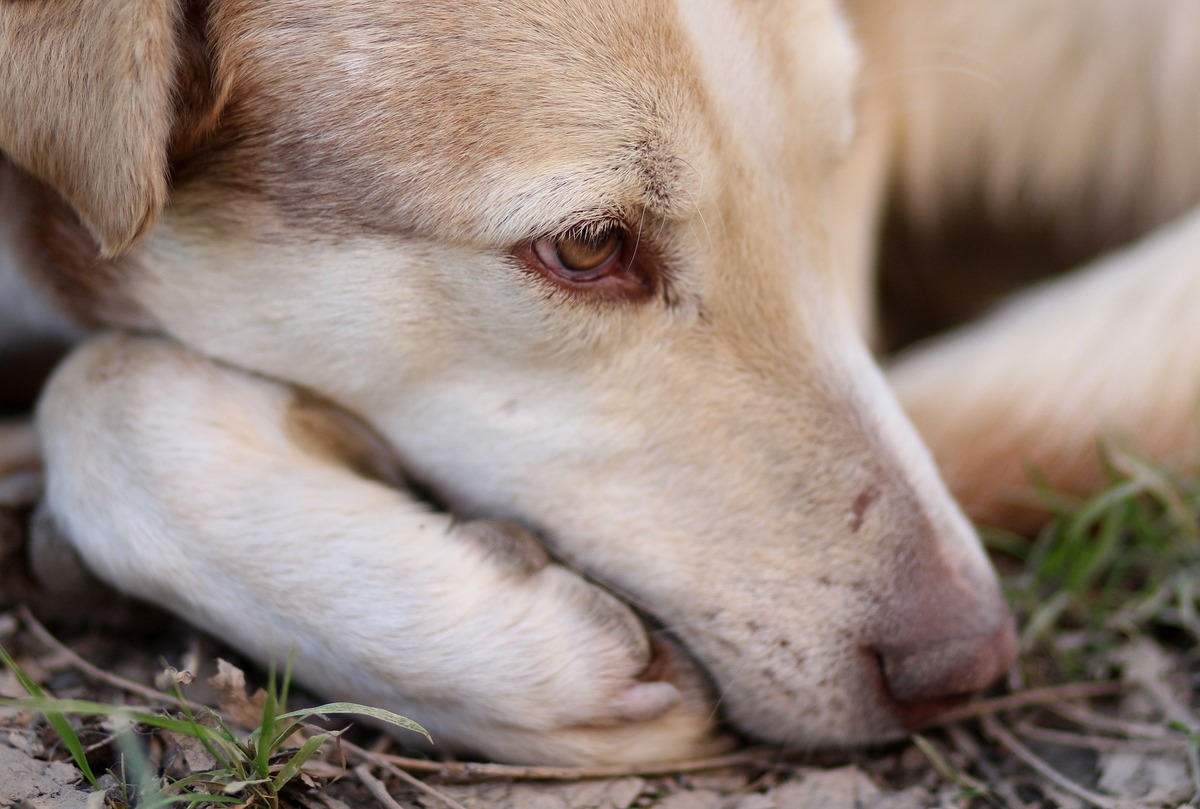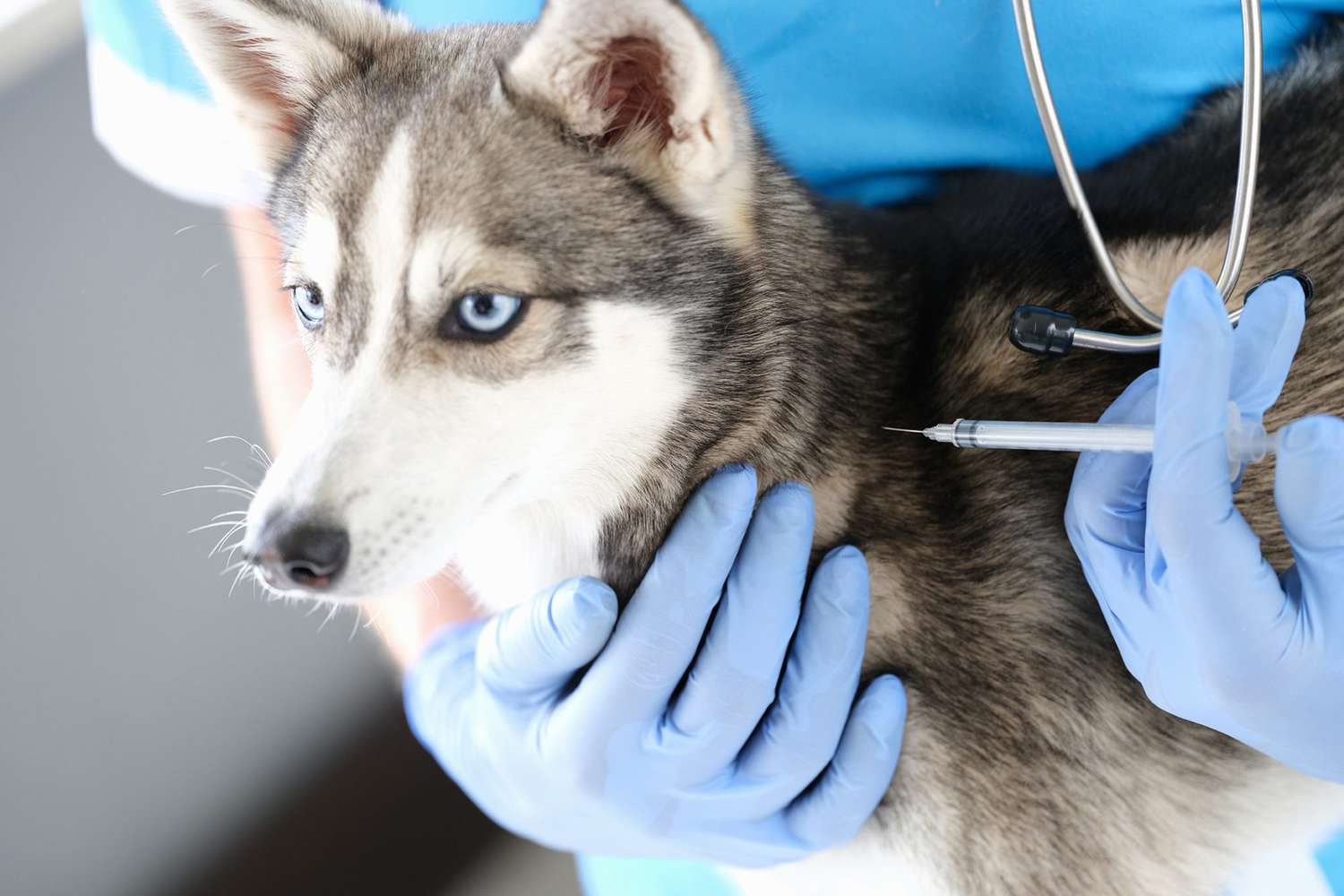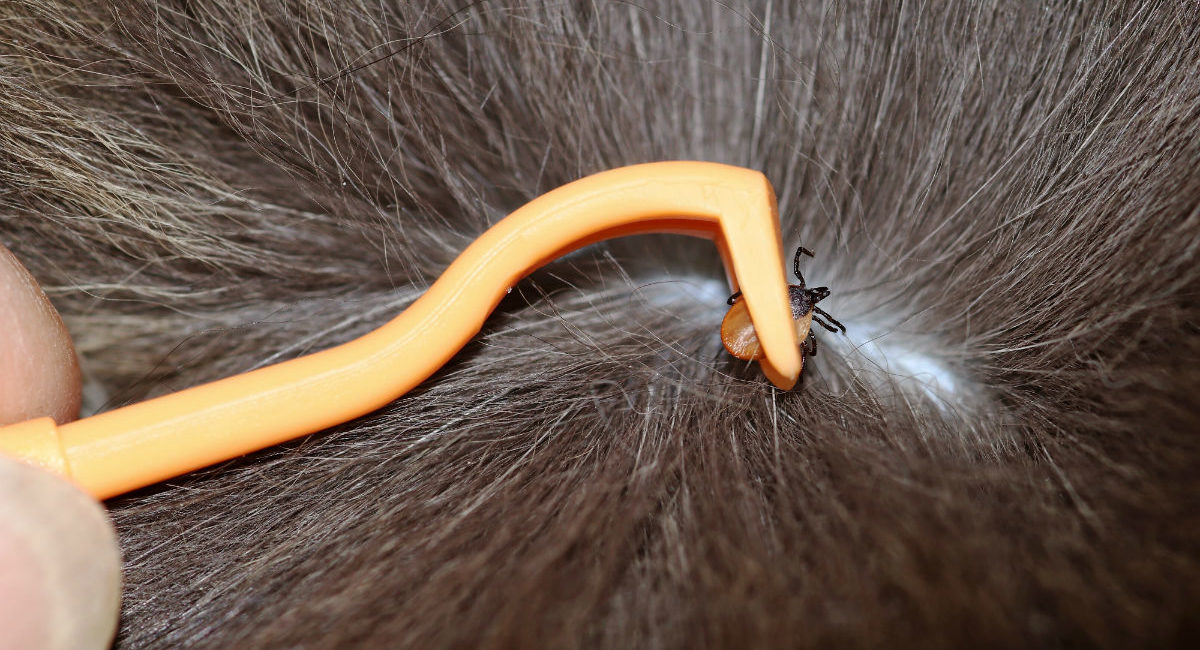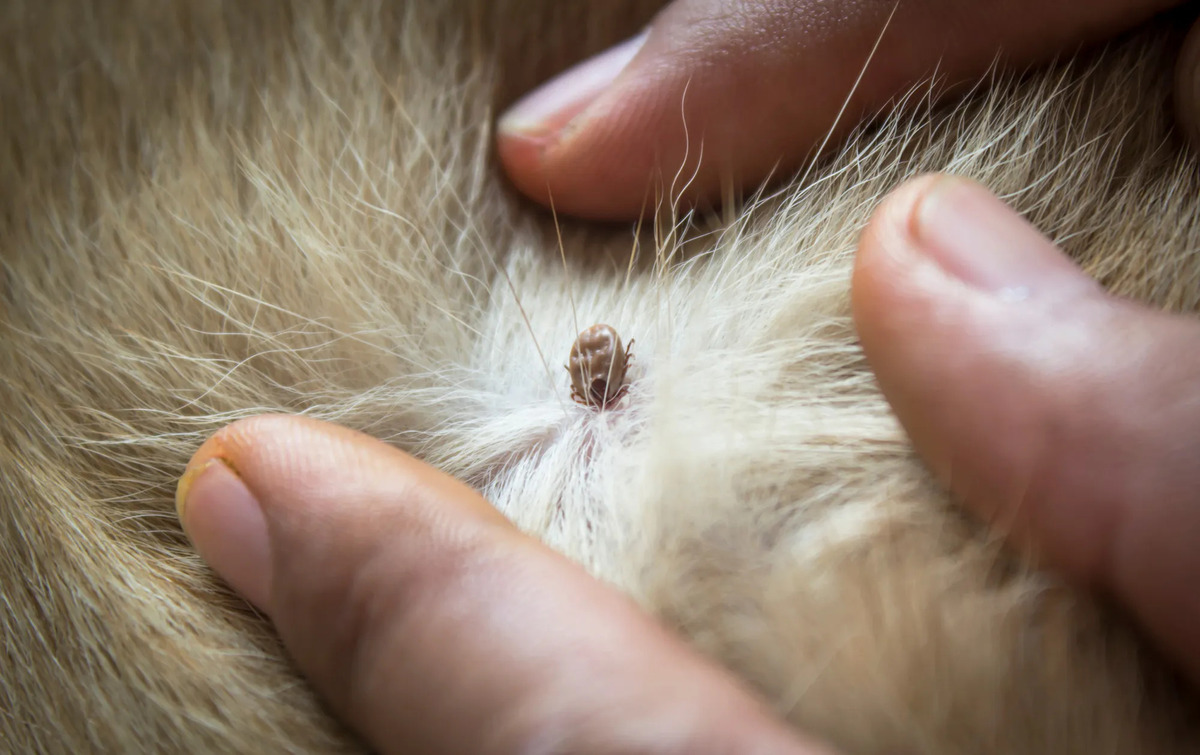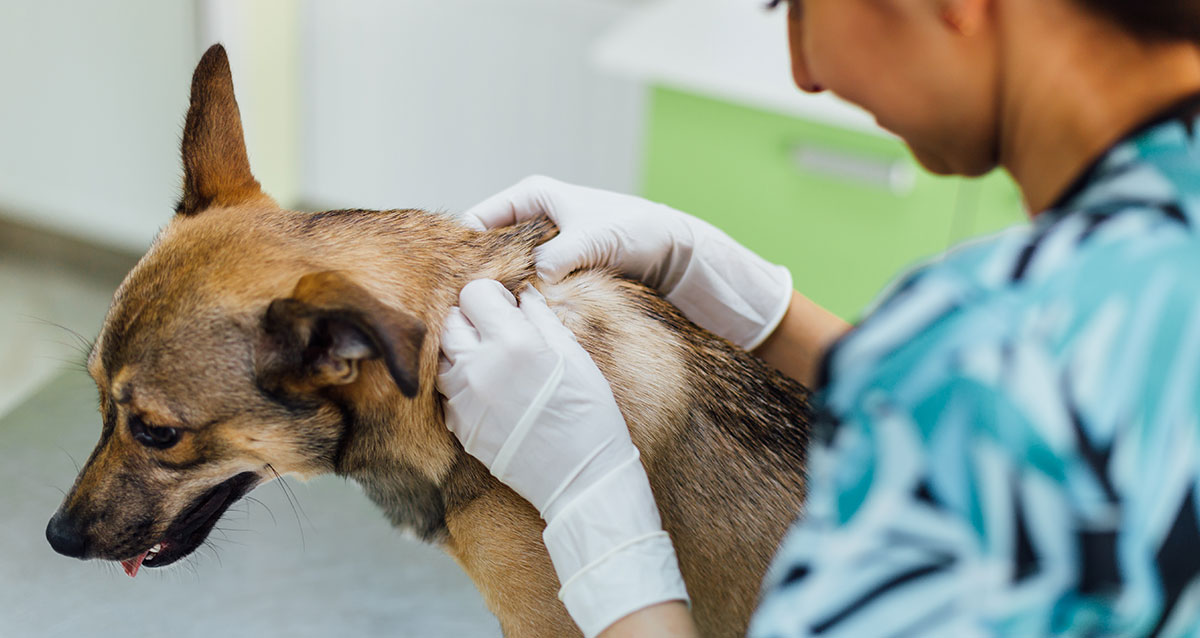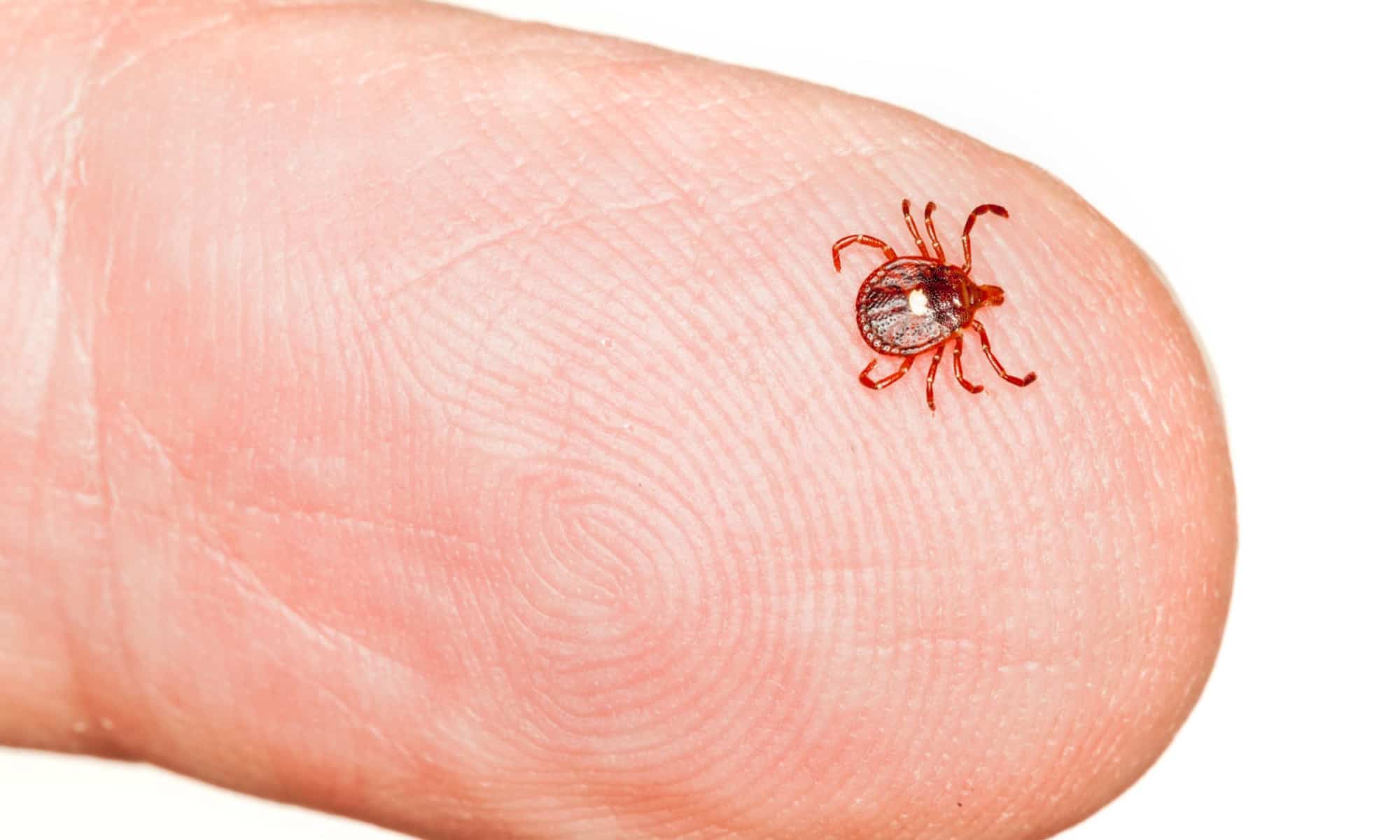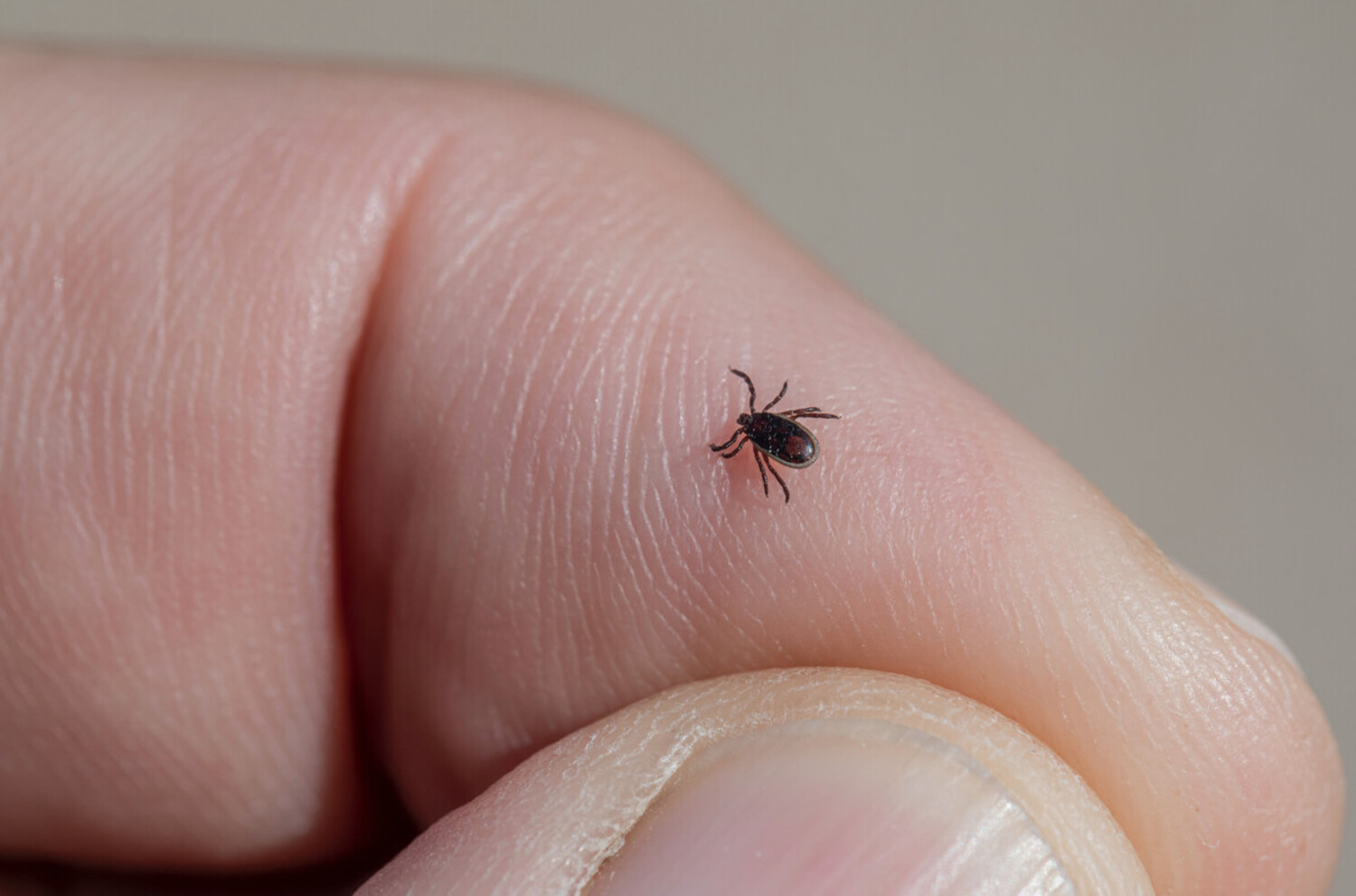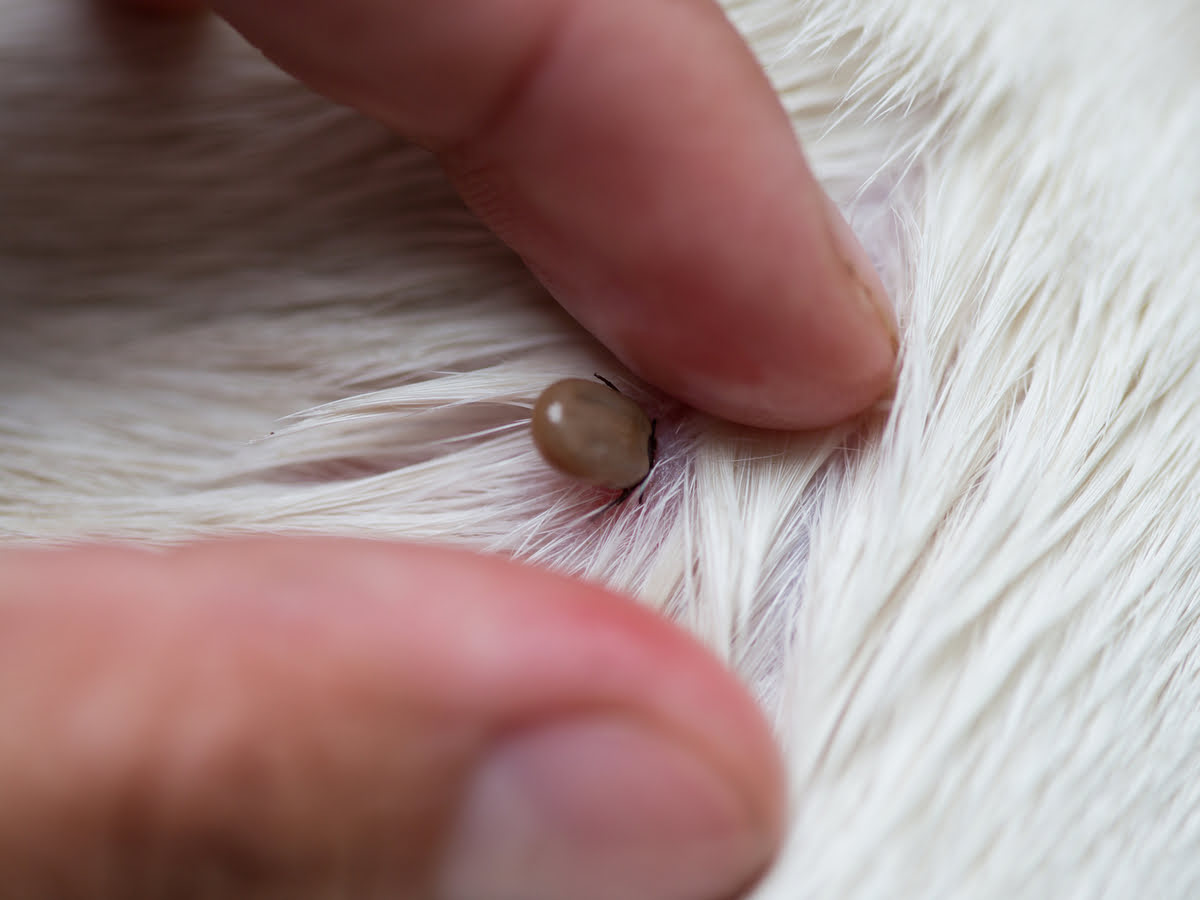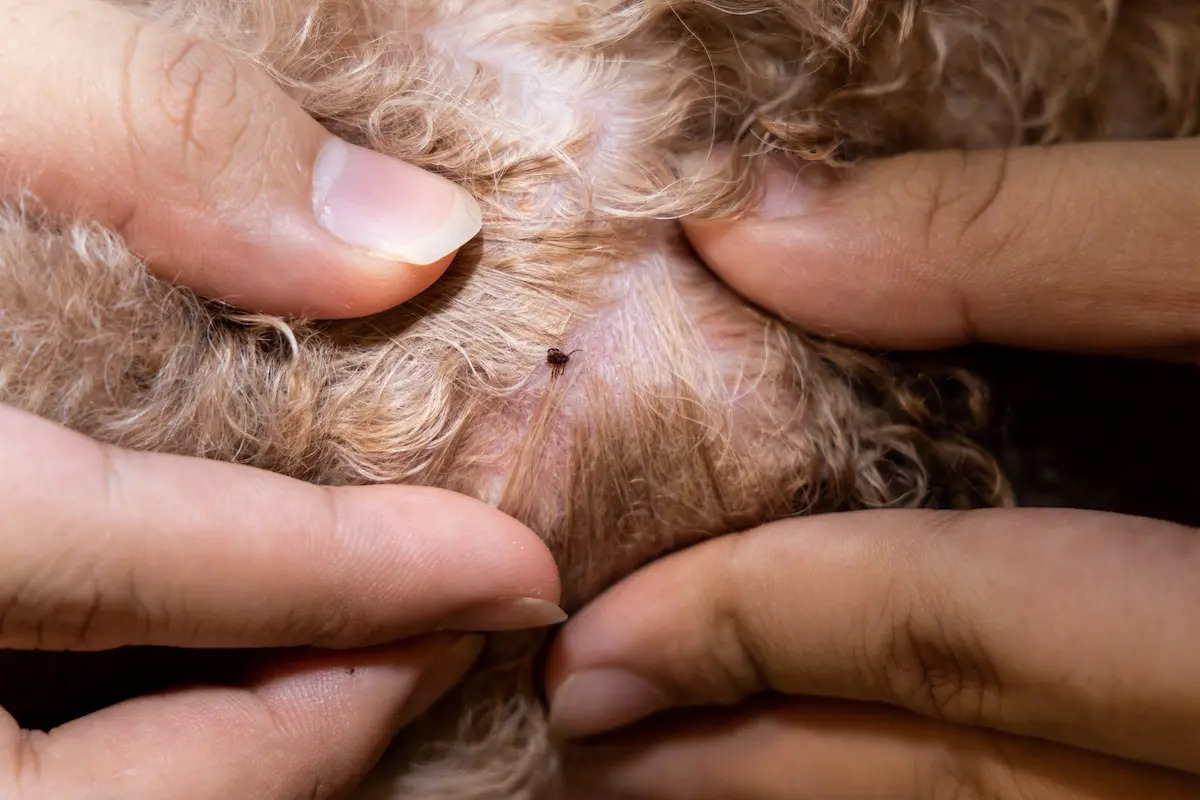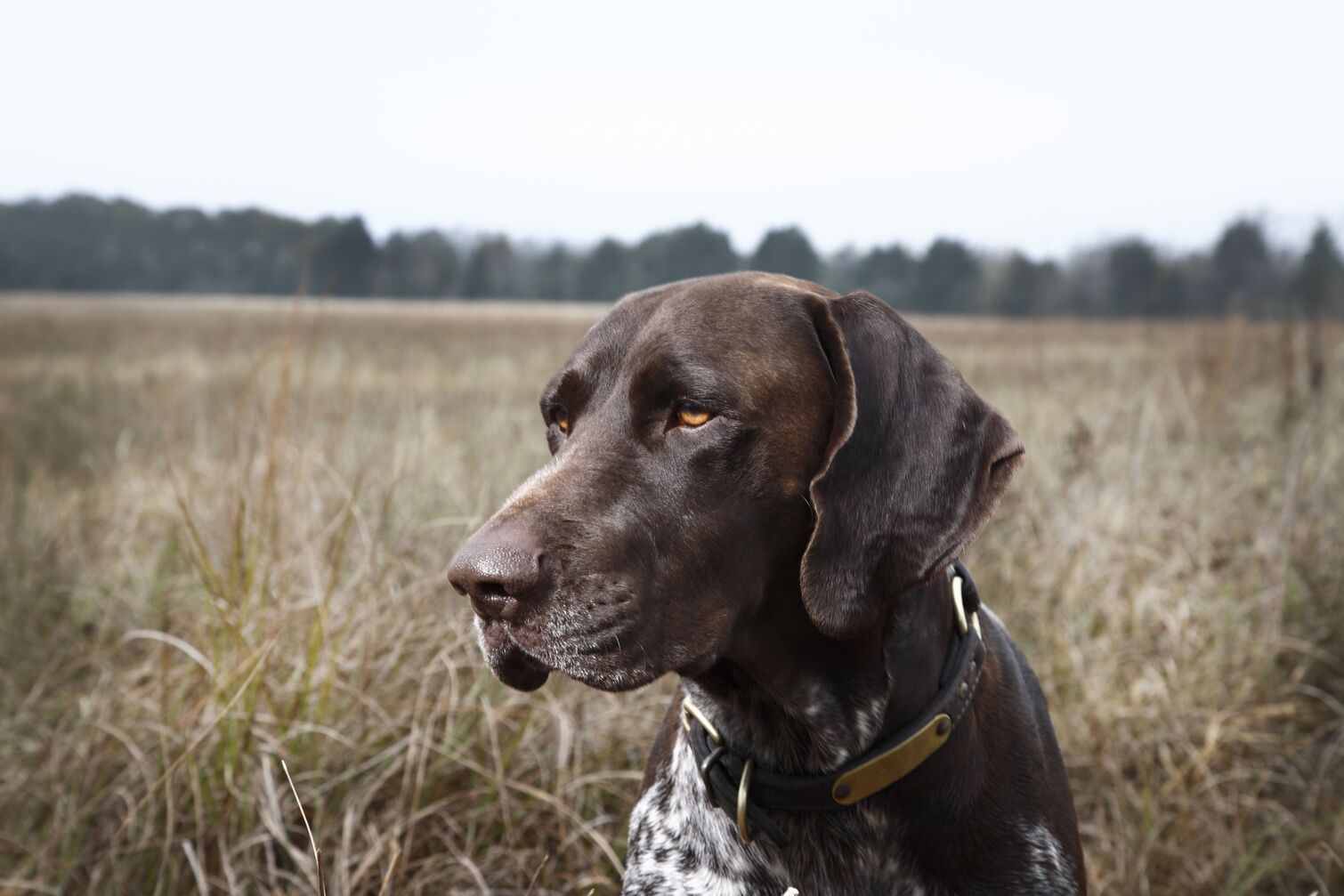Home>Health & Wellness>Common Health Issues>What Time Of Year Do Dogs Get Ticks


Common Health Issues
What Time Of Year Do Dogs Get Ticks
Published: February 5, 2024
Learn about common health issues for dogs, including when they are most at risk for ticks and how to protect them from these parasites.
(Many of the links in this article redirect to a specific reviewed product. Your purchase of these products through affiliate links helps to generate commission for Pawsomeoldies.com, at no extra cost. Learn more)
Table of Contents
Introduction
Ticks are small, blood-sucking parasites that pose a significant health risk to dogs and their owners. These tiny creatures are not only a nuisance but also carriers of various diseases, including Lyme disease, ehrlichiosis, and anaplasmosis. As a responsible dog owner, it's crucial to understand the factors that contribute to tick infestations and the peak seasons when dogs are most vulnerable to these pests.
Understanding the behavior and life cycle of ticks is essential for implementing effective preventive measures. By gaining insights into the peak tick season for dogs and the factors influencing tick activity, you can take proactive steps to safeguard your furry companion's well-being.
In this article, we will delve into the intricate world of ticks, exploring their life cycle, the peak seasons when dogs are at the highest risk of infestation, and the factors that influence tick activity. Additionally, we will discuss practical strategies for preventing tick infestations in dogs, empowering you to protect your canine companion from these troublesome parasites.
By the end of this article, you will have a comprehensive understanding of the seasonal variations in tick activity and the proactive measures you can take to keep your dog safe and healthy throughout the year. Let's embark on this enlightening journey to unravel the mysteries of tick infestations and equip ourselves with the knowledge to ensure the well-being of our beloved canine companions.
Read more: Where Do Dogs Get Ticks?
Understanding the Tick Life Cycle
Ticks undergo a fascinating and intricate life cycle comprising four stages: egg, larva, nymph, and adult. Understanding this life cycle is crucial for comprehending the seasonal variations in tick activity and implementing effective preventive measures.
Egg Stage
The life cycle of a tick begins when a female lays a batch of eggs, which can range from a few hundred to several thousand, depending on the species. These eggs are typically laid in a sheltered environment, such as leaf litter or the soil, where they remain until they hatch.
Larval Stage
Once the eggs hatch, they give rise to tiny, six-legged larvae. At this stage, ticks are known as seed ticks. They are incredibly small and often go unnoticed. In search of a host, these larvae climb onto grass or low-lying vegetation, where they wait to latch onto a passing animal, such as a small mammal or bird.
Nymph Stage
After feeding on the blood of their host, the engorged larvae drop off and molt into eight-legged nymphs. Nymphs are larger than larvae and are capable of transmitting diseases. They seek out a new host to feed on, often attaching themselves to larger animals, including rodents, birds, and even humans.
Read more: What Diseases Do Dogs Get From Ticks
Adult Stage
Once the nymphs have engorged themselves on blood, they drop off their host and molt into adult ticks. At this stage, male and female ticks seek a larger host for their final blood meal. Following this meal, female ticks engorge themselves and then lay eggs, completing the life cycle.
Understanding the intricacies of the tick life cycle provides insights into the various stages at which these parasites are most active. It also underscores the importance of year-round preventive measures to disrupt their life cycle and minimize the risk of infestation.
By gaining a deeper understanding of the tick life cycle, dog owners can appreciate the significance of consistent preventive strategies and the need for vigilance throughout the year. This knowledge empowers pet owners to protect their dogs from the potential harm posed by ticks at every stage of their life cycle.
Peak Tick Season for Dogs
The peak tick season for dogs varies depending on geographic location and environmental factors. In general, ticks are most active during the warmer months, typically from early spring to late fall. This period aligns with the favorable environmental conditions that facilitate tick activity, including increased temperatures and higher humidity levels. However, it's important to note that ticks can remain active in milder climates throughout the year, especially in regions with relatively consistent temperatures.
During the spring, as temperatures rise and vegetation flourishes, ticks become more prevalent. This is attributed to the favorable conditions for their development and quest for hosts. As summer approaches, the peak tick season intensifies, with a higher likelihood of dogs encountering these parasites during outdoor activities. The warm and humid environment provides an ideal habitat for ticks, leading to heightened infestation risks for dogs.
In many regions, the fall season also marks a significant peak in tick activity. As the weather begins to cool, ticks become more active, seeking hosts before the onset of winter. This period presents a notable risk for dogs, especially during outdoor excursions in wooded areas or grassy landscapes.
It's essential for dog owners to remain vigilant throughout the peak tick season, as these parasites can pose a threat to their pets' health. Regular inspection of the dog's coat and skin after outdoor activities is crucial during this time. Additionally, implementing preventive measures, such as using tick-repellent products and maintaining a tick-free environment, can significantly reduce the risk of tick infestations.
Understanding the peak tick season for dogs empowers pet owners to take proactive steps in safeguarding their furry companions. By being aware of the seasonal variations in tick activity, dog owners can tailor their preventive strategies to effectively protect their pets during the times of heightened infestation risk.
By staying informed about the peak tick season and its implications for dogs, pet owners can prioritize the well-being of their canine companions and create a safe and tick-resistant environment for them. This knowledge equips dog owners with the tools to mitigate the risks associated with tick infestations and ensure that their pets can enjoy a healthy and tick-free lifestyle throughout the year.
Factors Affecting Tick Activity
Several factors influence the activity and prevalence of ticks, ultimately impacting the risk of infestation for dogs. Understanding these factors is crucial for implementing targeted preventive measures and minimizing the potential threat posed by these parasitic pests.
-
Temperature and Humidity: Ticks thrive in warm and humid environments, with optimal activity occurring when temperatures range between 45 to 85 degrees Fahrenheit and humidity levels are relatively high. These conditions provide an ideal habitat for ticks to quest for hosts, making the warmer months conducive to heightened tick activity. Additionally, ticks are less active in dry or extremely hot conditions, as they are susceptible to desiccation.
-
Vegetation and Habitat: The presence of dense vegetation, including tall grass, shrubs, and wooded areas, significantly influences tick activity. Ticks seek out these environments to quest for hosts, increasing the likelihood of encounters with dogs during outdoor excursions. Additionally, ticks thrive in transitional areas where wooded habitats meet open spaces, creating prime locations for infestation risks.
-
Host Availability: The abundance of potential hosts, such as small mammals, birds, and larger animals, directly impacts tick activity. Ticks rely on these hosts for blood meals at various stages of their life cycle. Consequently, areas with a high density of wildlife and domestic animals can experience heightened tick activity, posing greater risks to dogs that frequent these locations.
-
Seasonal Variations: The seasonal fluctuations in temperature and environmental conditions play a significant role in shaping tick activity. While ticks are most active during the warmer months, their prevalence can persist in milder climates throughout the year. Understanding the seasonal variations in tick activity enables pet owners to adapt their preventive strategies to mitigate infestation risks during peak periods.
-
Geographic Location: The prevalence of different tick species varies by geographic region, influencing the overall tick activity and associated risks. Certain species are more prevalent in specific areas, and their activity levels can be influenced by local climate patterns and environmental factors. Awareness of the predominant tick species in a particular region is essential for tailoring preventive measures to address the specific infestation risks.
By considering these factors, dog owners can gain valuable insights into the dynamics of tick activity and make informed decisions regarding preventive strategies. Implementing measures such as regular tick checks, environmental modifications, and the use of tick-repellent products can effectively mitigate the risks associated with tick infestations, safeguarding the well-being of dogs throughout the year.
Preventing Tick Infestations in Dogs
Preventing tick infestations in dogs is paramount for ensuring the health and well-being of our canine companions. Implementing comprehensive preventive measures can significantly reduce the risk of tick-borne diseases and minimize the discomfort associated with tick infestations. Here are practical strategies to protect dogs from ticks throughout the year:
-
Regular Tick Checks: Conduct thorough tick checks on your dog after outdoor activities, especially in areas known for tick infestations. Pay close attention to the ears, neck, and paws, as ticks often attach themselves in these areas. Promptly removing any attached ticks can prevent potential infestations and reduce the risk of disease transmission.
-
Tick-Repellent Products: Utilize vet-recommended tick-preventive products such as spot-on treatments, tick collars, and sprays. These products are designed to repel and kill ticks, providing an additional layer of protection for dogs. It's essential to follow the application instructions and consult with a veterinarian to select the most suitable preventive products based on the dog's age, health status, and lifestyle.
-
Maintain Tick-Free Environment: Regularly groom and maintain the dog's living environment to minimize tick habitats. This includes keeping the lawn well-trimmed, removing leaf litter, and creating barriers to prevent wildlife from entering the yard, as they can carry ticks. Additionally, consider using tick control products in outdoor spaces frequented by the dog.
-
Vaccination Against Tick-Borne Diseases: In regions where specific tick-borne diseases are prevalent, vaccination against these diseases can provide an added layer of protection for dogs. Consult with a veterinarian to assess the risk factors and determine the appropriate vaccination schedule based on the dog's lifestyle and potential exposure to ticks.
-
Environmental Modifications: Implement environmental modifications to reduce the likelihood of tick encounters. This may involve creating tick-safe zones in the yard, using landscaping techniques to deter ticks, and minimizing the dog's exposure to tick-prone areas during peak infestation seasons.
-
Professional Pest Control Services: In cases of severe tick infestations, seeking professional pest control services for the home and outdoor spaces can effectively eradicate ticks and prevent reinfestation. Professional extermination treatments can target tick habitats and provide long-term relief from infestation risks.
By integrating these preventive strategies into the dog's care routine, pet owners can create a resilient defense against tick infestations and mitigate the associated health risks. Consistency and vigilance in implementing these measures are essential for safeguarding the dog's well-being and fostering a tick-free environment.
Understanding the seasonal variations in tick activity and the factors influencing tick infestations empowers dog owners to take proactive steps in protecting their pets from these parasitic pests. By prioritizing preventive measures and staying informed about the best practices for tick control, pet owners can ensure that their dogs can enjoy a healthy and tick-free lifestyle throughout the year.
Read more: What Is A Good Diet For A 10-Year-Old Dog
Conclusion
In conclusion, understanding the seasonal variations in tick activity and the factors influencing tick infestations is essential for safeguarding the health and well-being of dogs. By gaining insights into the peak tick season, the intricate life cycle of ticks, and the environmental factors that contribute to tick activity, pet owners can implement targeted preventive measures to protect their canine companions throughout the year.
The peak tick season for dogs, typically spanning from early spring to late fall, presents heightened infestation risks, necessitating increased vigilance and proactive tick control strategies during this period. By remaining aware of the environmental conditions that favor tick activity and the potential risks associated with specific geographic locations, dog owners can tailor their preventive measures to effectively mitigate infestation risks.
Factors such as temperature, humidity, vegetation, and host availability play pivotal roles in shaping tick activity, influencing the likelihood of encounters with dogs. By considering these factors and implementing practical strategies such as regular tick checks, the use of tick-repellent products, and environmental modifications, pet owners can create a resilient defense against tick infestations and minimize the risk of tick-borne diseases.
Furthermore, the importance of consistent preventive measures cannot be overstated. By integrating tick control practices into the dog's care routine and seeking professional pest control services when necessary, pet owners can create a safe and tick-resistant environment for their beloved pets.
Ultimately, the well-being of dogs is a top priority, and by staying informed about the best practices for tick prevention and control, pet owners can ensure that their canine companions can enjoy a healthy and tick-free lifestyle throughout the year. With a proactive approach to tick management and a deep understanding of seasonal variations in tick activity, pet owners can effectively safeguard their dogs from the potential harm posed by these parasitic pests, fostering a safe and thriving environment for their beloved companions.
